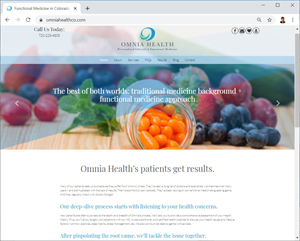How to create an email signature: 5 tips to create a professional-looking email signature that supports your brand
Often overlooked, the email signature is a hardworking “marketing tool” that supports your brand.
I’m a big believer in ensuring your entire marketing toolkit is on-target and informative – and supports your brand. Of course, this includes critical marketing tools such as your website, business card, and printed collateral (e.g., brochures, sell sheets, and speaker one-sheets). This also includes a smaller “marketing tool” that is often overlooked: your email signature.
How do you create an informative, professional-looking email signature? Here are tips!
- Some information is critical to include – It’s important to include these components: company logo, your name, your title, your phone number, website address (with link), and social media icons (with links).
- Some information is optional – Is your company name clearly spelled out in your logo? If so, you may not need to include it in the text block of your nicely designed email signature. Are you a solopreneur (e.g., professional speaker, consultant, or author)? If so, I strongly encourage you to include your photo. Also consider including a limited number of icons for special awards or a link to read your company’s 5-star reviews. Another optional item is your email address. Some people insist it’s not necessary: “Your email address is elsewhere in the email – save the space!” Personally, I prefer to include my email address (with link) in my email signature. This way, recipients can quickly find ALL critical contact info in ONE place.
- From a branding standpoint, consistency is critical – Everyone in your company should use the IDENTICAL email signature, especially those who correspond with customers and vendors. Of course, change the personal information: name, title, phone, email. Don’t let employees get creative and come up with their own, unique email signature.
- Here’s a tip to create a professional-looking email signature – Outlook and other email clients/software programs don’t make it super easy to design a professional-looking email signature. MY TIP: I created my email signature in a Microsoft Word document, then copied/pasted the artwork into Outlook. My email signature is below. Since email signatures can contain a lot of information (both text and graphics), creating a professional-looking design can be a challenge. If you’re struggling, it’s time to call your favorite designer and ask for help.
- Look online for examples and inspiration – Search the Internet for “tips to create a professional email signature.” You’ll see a wide variety of examples. Like Goldilocks, find one that is “just right.” Use it as a template to organize your logo, photo (if appropriate), and all contact information. The goal is to create an email signature with an attractive, uncluttered design. This small “marketing tool” should be informative, professional, and support your brand!
Case study: New website copy for Omnia Health
 Omnia Health needed help with their website.
Omnia Health needed help with their website.
This functional medicine practice had grown significantly since its founding. The original website didn’t have enough information for new patients to understand the scope of what they offered. Plus, the look-and-feel no longer fit their practice and, with very few SEO keywords, they weren’t getting found.
They knew a robust website could help grow their practice and drive efficiencies.
Lauren Graphics – a fabulous boutique web/print design agency in metro Denver – asked me to join the team to help create an all-new, on-target website for Omnia Health. The doctor and staff wanted their new website to present:
- A more thorough explanation of functional medicine
- Clear statements regarding the particular types of chronic issues the practice can resolve for patients, so prospective patients could “self-qualify”
- Their expanded services, with plenty of details to answer most people’s questions and reduce the number of calls
- A thorough FAQs section to cut down on the number of calls
- An updated “Meet the Team” section with more impactful bios
- A case study section to show a track record of success resolving patient issues
- A blog with regular articles to share advice, showcase their expertise, and improve SEO
Now, with a clear understanding of the “landscape,” it was time to get started.
To address all these needs, we started with my copywriting activity to capture the essence of their practice, put forth clear benefits, explain functional medicine, and organize the many details. I also included keywords to improve SEO.
While the copy was being written, the website designers/developers created a bright, attractive, and engaging design to convey the idea of health and wellbeing. As a team, we decided to expand the website to improve the user experience, making it easier to find the information that current and prospective patients need. Omnia’s doctor and staff were thrilled were their beautiful, hardworking website!
This successful practice will continue to grow. As the practice expands, it will be easy to expand the website to support their communication needs.
 “Lauren Graphics and team – including Patrice Rhoades-Baum as our website copywriter – did a wonderful job with our website. They listened to our needs and delivered a beautiful and fully functioning website. We are so proud of our website and get many compliments on the design and how informative it is. The option for patients to sign up for a 15-minute consultation through our website has made a huge difference to our workflow. By adding an extensive FAQs page, patients have more information about how our practice works. This keeps their 15-minute consultation focused on their health concerns. The FAQs page also answers many questions, which prompts qualified leads to reach out and get on our schedule. Thank you, team, for listening to us and creating an amazing website!”
“Lauren Graphics and team – including Patrice Rhoades-Baum as our website copywriter – did a wonderful job with our website. They listened to our needs and delivered a beautiful and fully functioning website. We are so proud of our website and get many compliments on the design and how informative it is. The option for patients to sign up for a 15-minute consultation through our website has made a huge difference to our workflow. By adding an extensive FAQs page, patients have more information about how our practice works. This keeps their 15-minute consultation focused on their health concerns. The FAQs page also answers many questions, which prompts qualified leads to reach out and get on our schedule. Thank you, team, for listening to us and creating an amazing website!”
– Dr. Jacqui Pariset, Omnia Health, metro Denver, Colorado
BRANDING FOR SOLOPRENEURS: If you’re starting a business, start with this fast, affordable, results-driven process to nail your brand
Your website and marketing tools must be on-target – and it all starts with clarifying your brand message.
 In these fiercely competitive times, your website and other marketing tools must be crisp and clear, polished and professional, strategic and hardworking. An on-target marketing toolkit sets you apart from the competition – it helps you promote and grow your business. Without question, your clear brand message serves as the foundation.
In these fiercely competitive times, your website and other marketing tools must be crisp and clear, polished and professional, strategic and hardworking. An on-target marketing toolkit sets you apart from the competition – it helps you promote and grow your business. Without question, your clear brand message serves as the foundation.
First step: If you are a solopreneur launching a business as a professional speaker, business coach or author, let’s lay a solid foundation by clarifying your brand.
Backed by 40 years of marketing experience, I have “cracked the code” for small business branding! For the past 15 years, I’ve teamed with hundreds of solopreneurs to clarify their brand message before writing on-target website copy as well as content for their speaker one-sheet or author one-sheet. This led me to create my unique Nail Your Brand system. In a fast-paced, affordable, results-driven process, we work together to identify the unique Brand Elements for your business.
Next step: Let’s create a hardworking website and marketing toolkit.
As project manager, I lead my hand-selected team of designers, website developers, and social media marketing experts to create polished marketing tools that powerfully and beautifully convey your brand and “speak” to your target market. Typically, this includes a new logo, website, blog articles, social media profiles, speaker one-sheet or author one-sheet, and business card.
Ready to launch your business? Ready to shine as an expert?
Let’s clarify your brand message, develop a strategic website, and create marketing tools that ensure you shine as the expert you are. You’ll enjoy this fast-paced process AND you’ll be thrilled with the results!
SEO 101: Help Google find your website

When it comes to SEO, this old saying fits: “Like a well, it’s a deep subject.”
Search-engine optimization (SEO) is a website strategy to improve rankings in Internet searches. Complex and technical, SEO is a surprisingly deep subject.
The good news: You can take 4 basic steps to improve SEO.
With just a few steps, you can improve SEO to help Google and other search engines – and your prospects – find your website.
Follow these 4 steps to make your company’s website a hardworking marketing tool:
- Upgrade an old website – This can provide a good boost to SEO. I’m happy to recommend an exceptional, boutique website development firm that builds new websites using SEO best practices. (Call me to chat about my favorite website designer/developer!)
- Add meta descriptions – As a trained SEO writer/website writer, I’ll pen hardworking meta descriptions for your website. Your developer places this information “behind-the-scenes” in your website’s programming. This is a critical ingredient in your SEO strategy.
- Include SEO keywords – I’ll update your website content with on-target messaging that “speaks” to your target market. This keyword-rich website content also “speaks” to the search-engine robots, with no awkward keyword stuffing.
- Post regular blog articles – Think of SEO robots as hungry little critters. Your regular blog posts are like a welcoming buffet of yummy content, inviting them back again and again. To get your blog going, I’m happy to brainstorm topic ideas with you and/or ghostwrite articles for you (even technical subjects).
6 tips to make blogging fun and easy!
 It’s a good idea to post regular blog articles to position your company as a leader, educate prospects and customers, and enhance your website’s SEO.
It’s a good idea to post regular blog articles to position your company as a leader, educate prospects and customers, and enhance your website’s SEO.
But do you feel like blogging is a chore?
Here are 6 ideas to make blogging fun and easy.
- Start a list of topic ideas – When inspiration hits, toss a scribbled note into a file.
- Keep the topic tightly focused – Long, cumbersome articles are no fun to write (and no fun to read).
- Recycle older and “evergreen” articles – Republish articles and case studies that are still relevant.
- Aim for a word count of 300 words – More is fine, but 300 words is a good goal.
- Include lighthearted topics – Personal-interest articles and photos such as employees volunteering in your community are a fun, rewarding way to connect with like-minded people who share similar interests, including prospective customers.
- Improve SEO with a plugin – This useful tool gives you step-by-step guidance to improve SEO, which helps you ensure your time is well-spent creating a hardworking blog post.
3 tips to get great customer testimonials
It’s critical to get great testimonials – and include them on your website – because this helps you win new customers.
But it can be challenging! Here are 3 ways to ask for (and get) great customer testimonials.
Tip #1: Jot down notes when customers rave, then write the testimonial for them.
If you’re on the phone with a customer and they comment about how much they like your product or service, grab a pen and start scribbling! You can polish their comments, email the testimonial to them, and ask permission to use it on your compan y website.
y website.
Tip #2: Call and ask for a testimonial, on the spot.
This tip is especially useful when you’re updating your website. Simply call your customers, explain that you’d love a testimonial, and ask if they have a minute. Just ask one or two questions, then type or write down what they say. Edit your notes into a brief testimonial.
Tip #3: Convert emailed comments into testimonials.
Customer thank-you notes make great testimonials! You may want to ask if you can publish their name on your website. Alternatively, just use their initials.
Do you have a stalled website project? Let’s tackle it now!
Note from Patrice: I wrote this short article as a favor for a colleague, which she shared in her email newsletter. I frequently team with Lauren Klopfenstein, owner of Lauren Graphics, Inc., on client website projects. I provide marketing insights, branding, and website/SEO copywriting. Lauren and her team provide outstanding website design and development. View their website portfolio at www.LaurenGraphicsInc.com.
You need to update your website, but…
Does your website project keep getting pushed to the backburner?
Do you need to hit the “refresh” button on your company’s website? Perhaps you need a small update, just a few nips and tucks to replace outdated information, add a new product or service, or add new case studies and testimonials.
Or do you need a brand-new website with a contemporary and compelling design, keyword-rich SEO copy, and on-target messaging that resonates with your prospects?
Whether your project is small or large, we find that website projects often get pushed to the backburner.
Here are 3 common reasons why this happens:
- “We don’t have a clear direction” – Backed by years of website-creation experience, we always start by helping you clarify your goals and objectives.
- “The project feels daunting” – Website projects can be complex, but they don’t have to be! A great solution is taking a Phase 1 / Phase 2 approach.
- “We’re busy, and this could be a time-consuming project” – Don’t worry, we do the heavy lifting! Our team has a depth of experience including project management to oversee – and competently complete – your website project.
There’s no time like the present! Let’s tackle your website project NOW.
How to repurpose content: Follow 2 easy steps
When it’s time to write a blog post, do you search for fresh ideas — but nothing comes to mind? Here’s how to repurpose content.
If you come up empty-handed, the solution might be at your fingertips. Instead of spending time writing entirely new copy, you can breathe fresh life into EXISTING content — your articles, blog posts, webinar transcripts, book chapters, and worksheets. It’s easy to repurpose your existing content.
Repurposing and “recycling” older articles is perfectly fine — as long as the topics are evergreen (still relevant).
It surprises me when my clients express reluctance to repurpose content they wrote years ago, for example, older case studies or blog articles. If the topic is evergreen, the content may need just a bit of editing — a tweak here, a twist there — to be updated.
Perhaps it’s my South Dakota roots, but whenever I write about the topic of how to repurpose content, the word FODDER leaps to mind.
One definition of fodder is “coarse food for livestock.” Ok, that definition does not apply! But this one does: “raw material.”

When you think about repurposing your existing content, think about the “fodder” at your fingertips!
Here’s why I like the word FODDER …
Early in my corporate marketing career, I figured out how to repurpose content. I had to — it was a matter of survival!
On any given day, I faced deadlines related to marketing brochures, direct mail, public relations, white papers, case studies, tradeshows, sales presentations, websites, online newsletters, and advertising.
Whew!
Since I was juggling so many projects at once, I mastered the art of leveraging and repurposing content to save time and meet deadlines.
Long ago, I began looking at the copy I wrote as much more than one-off content. Instead, I viewed everything I wrote as potential fodder for a future project. Today this skill comes naturally for me.
Are you a solopreneur (professional speaker, marketing consultant, business coach, life coach)? Or do you own a different type of business? Or do you wear the marketing hat for a larger company? If so, there’s a good chance you write a lot of unique content. This means there’s a good chance you have plenty of FODDER at your fingertips!
Follow 2 easy steps to “recycle” and repurpose content.
Step 1: Use this checklist to identify ALL the places your written content exists.
- Marketing tools: Website, speaker one-sheets, brochures, sales sheets, and compiled testimonials
- PowerPoint or Keynote presentations and transcripts for keynotes, videos, webinars, and podcasts
- Handouts, worksheets, tip sheets, and checklists
- Social media posts and lists of discussion topics
- Published articles, case studies, and white papers
- Blog articles
- Email newsletters
- Opt-in box giveaway item (aka lead magnet, opt-in bribe, or freemium)
- Your books
- Your information products
- Other: __________________________________
Step 2: Take a fresh look at how you can repurpose your existing content — the fodder at your fingertips!
Let’s brainstorm a bit to spur some ideas. Take a minute to think broadly about the content you have written, per the above list. How can you “recycle” and repurpose your existing content?
Here’s an example: You could repurpose a webinar transcript into:
- Blog article or article series
- Guest blog article
- Email newsletter article
- Article to be published in a trade magazine (printed or online)
- Chapter for your next book
- Information product
- Opt-in box giveaway item, perhaps distilled into a worksheet or tip sheet
- Raid tidbits and share daily tips on Facebook and other social media sites
Instead of spending time writing entirely new articles, you can repurpose content by breathing fresh life into your existing, evergreen copy.
I’ve been transforming “fodder” — already written content — into polished, vibrant, relevant copy for decades. I’m happy to help YOU transform your transcripts, blog posts, email newsletter articles, presentations, video scripts, handouts, worksheets, and other existing copy into NEW and UP-TO-DATE content.
Do you need fresh ideas and a bit of guidance?
If you need writing or editing support to repurpose your existing content, call me at 719-685-1108 or pop an email to Patrice@PatriceRB.com. Remember, I offer a free, 30-minute consultation.
Content marketing: Here’s your 3-step plan
Whether you love to write or just endure it, it’s a good time to embrace a content marketing strategy.
Do you love to write, and the words flow like water in a stream? My guess is probably not! If you’re like most people, when it’s time to write, you need to shut your office door, knuckle down, and just get it done. Yet no matter your approach to writing, you’re in luck. Why? Because producing content is the absolute key to “content marketing,” an effective marketing strategy that continues to gain traction.
Content marketing is truly enjoying its day in the sun! In fact, the Content Marketing Institute says: “It’s the present – and future – of marketing.” In other words, it’s the better way, and it’s here to stay.

Content marketing is like “going fishing” for prospects. In very simple terms, you bait the hook, stay attentive, and reel them in. Photo of fisherman at Fall River, Rocky Mountain National Park by Patrice Rhoades-Baum.
What is content marketing?
Here’s a definition from the Content Marketing Institute:
“Content marketing is a strategic marketing approach focused on creating and distributing valuable, relevant, and consistent content to attract and retain a clearly defined audience — and, ultimately, to drive profitable customer action. Instead of pitching your products or services, you are providing truly relevant and useful content to your prospects and customers to help them solve their issues.”
Put more simply: When you regularly create and distribute useful content, you can attract prospects, nurture a relationship, and drive sales.
Even if you only do a tad bit of marketing in your business, you know that writing content is part and parcel to implementing all types of marketing, public relations, and advertising strategies.
Many of my clients – solopreneurs and mid-size businesses – are actively executing aggressive content marketing strategies. Many ask me to write content for them on a regular basis. Primarily, this includes:
- Blog articles
- Email newsletter articles
- Product/service web pages
- Case study web pages
- Articles for trade publications
- Content for infographics
- Copy for marketing brochures and mailers
Working with different clients in different industries has given me insight into the many ways to pursue content marketing. Some strategies are fairly simple; some are quite robust. The end goal is the same: attract prospects, nurture a relationship, and drive sales.

Content marketing is much like fishing. Native to Rocky Mountain National Park, this greenback cutthrout trout is federally listed as endangered. Photo by Patrice Rhoades-Baum. (I did not enhance the colors of this guy – he swam into the sunlight and flashed brilliant red!)
Get started on (or improve) your content marketing strategy: Here is my 3-step plan
Whether your business is large or small, I believe there are 3 basic steps for your content marketing plan. In a nutshell, these are: (1) Write regular blog posts to attract prospects to your website. (2) Entice them with a compelling giveaway, so you can get their email address and build your list. (3) Send regular email newsletters to your list to stay top-of-mind, nurture the relationship and, over time, convert prospects to paying clients.
Keep reading … here are details for this basic, 3-step plan. Follow these tips to begin (or improve) your content marketing strategy.
1. BLOG ARTICLES – Post regular blog articles with information that is useful, relevant, and informative for your target market. Although your blog articles clearly show your expertise, they are not sales pitches. The reason to post new content regularly is two-fold: You are inviting and attracting prospects, customers, and social media connections to visit your website. Plus, adding new content invites Google’s search-engine robots to revisit your site, which can help to improve your search-engine rankings.
Tips:
- Include SEO keywords in every blog post, which helps to attract prospects to your blog and website. Identifying organic SEO keywords is simple. Here’s a quick case study: I just began teaming with an accomplished executive coach and his assistant. We quickly identified these organic SEO keywords: his full name (not just his first name) and his city as well as phrases such as executive coach, business coach, executive coaching, Vistage Chair, and so on.
- In terms of word count, Google likes 300+ words.
- Use a plugin (e.g., Yoast), which can guide you to improve your search-engine optimization, with the addition of a keyword focus, meta description, and more.
- Use your social media sites to announce the new article to your fans, friends, and followers. This invites folks to your website/blog to read the article.
- I like to include brief blog articles with photos on topics of personal interest. Examples include highlights of hiking adventures, archaeological field trips, and roadtrips throughout the Southwest. This has been a fun and rewarding way to truly connect with many like-minded people around the world.
2. OPT-IN BOX – Ensure your blog has an opt-in box in the margin, so you can capture visitors’ email addresses. The opt-in box must have a compelling, free giveaway item (aka lead magnet, opt-in bribe, or freemium). Here’s the reason to create a hardworking opt-in box: This simple tool helps to build your list. This enables you to stay in contact with prospects and grow your relationship.
Tips:
- You can have one main opt-in box in the margin of your blog. Better yet, each blog article can have a brief corresponding worksheet that is downloadable via that particular blog article’s opt-in box.
- Place an opt-in box on all pages of your website, not just on the blog and Home page. In fact, consider having opt-in boxes with different giveaway items on various web pages to entice prospects who are interested in your various products and services.
- Ideally, when someone opts-in, they should receive several autoresponder emails that offer additional, valuable information. This helps to create a trusting relationship. Keep the focus on giving value rather than sell-sell-sell.
- In the opt-in box, consider asking for ONLY the email address – not first name, last name, city, company, and other information. Marketing data shows that conversion rates improve when less information is required.
- Ask your assistant or website developer to ensure the email address is automatically entered into your email newsletter database (e.g., MailChimp or Constant Contact).
- If you’re implementing a pay-per-click (PPC) advertising strategy, the ad’s link should take prospects to a landing page with an opt-in box and compelling giveaway item. (Place the same opt-in box at both the top and bottom of the landing page.)
- Here are 10 example giveaway items:
– Infographic (these appeal to prospects due to instant gratification)
– Webinar
– Video
– Recorded interview
– Worksheet
– Tipsheet
– Checklist
– Set of templates
– eBook
– White paper
3. EMAIL NEWSLETTER – Send a weekly or monthly email newsletter. The primary reason is to stay top-of-mind with your prospects and customers. Ideally, many prospects will eventually convert to paying clients. Plus, many clients will return to purchase your products and services.
Tips:
- Primarily, the content should add value, not sell.
- You can certainly promote new products, services, special offers, and so forth. And, of course, you can include links to your website.
- Consider creating an editorial calendar. This step can help you develop more sophisticated email campaigns to support your product funnel and drive the sales process.
All the above steps assume that the website content is up-to-date, particularly when it comes to brand messaging, products, services, and case studies. In fact, I encourage you to keep your website content as current as possible. (If you need help, give me a holler.) Your up-to-date website is the hub of all marketing activities.
Follow this basic 3-step content marketing strategy to attract prospects, nurture the relationship, and drive sales.
Best business writing tip ever: Walk away!
What’s the best way to improve your writing? Walk away!
Here’s my favorite business writing tip: Write your first draft, taking time to re-read the copy and give it a good polish.
Next, walk away for an hour – or a day!
What do you get?
Perspective and objectivity.
Walking away helps to give you distance – literally and figuratively! When you come back, you’ll take a fresh look at the content you wrote. You’ll be surprised how much perspective and objectivity you will gain.
What do you do next? Edit to ensure content is crisp, clear, and compelling.
Now, go back to your writing. Pretend someone else wrote the content. Put on your editor’s hat. It’s time to edit ruthlessly!
Follow this 10-point checklist to edit your content:
- Make sure there’s a clear benefit message. (Readers should quickly understand why they want to invest their limited time to read your content. What will they learn? Don’t make them guess!)
- Write a more enticing headline.
- Ensure every sentence is as clear as possible.
- Check to ensure the overall structure makes sense. (For example, if you’re writing a case study, have you presented before/after events in chronological order?)
- Add subheads to strengthen structure.
- Trim the word count.
- Add SEO keywords.
- Proof to fix spelling, grammar, and punctuation errors.
- Fact-check as necessary.
- Add a call-to-action at the end.
More on this business writing tip . . .
- Why do I consider this to be the best business writing tip EVER? Because “walking away” can help you to objectively look at and edit your article, blog post, worksheet, brochure, and book. Do this every time, and you WILL improve your writing – and your message.
- When editing, I like to print out the page(s). Surprisingly, reading a piece of paper – versus staring at the screen – adds even more perspective and objectivity.
- Also, when editing, I like to use a red pen. If you find red ink daunting (perhaps you’re haunted by harsh teachers wielding red pens), then use green, purple, blue, or black. The color doesn’t matter. What matters is taking time to thoroughly – and ruthlessly – edit your content.
In a nutshell, here’s why this is my favorite business writing tip …
When you walk away – then come back later to ruthlessly edit your writing – your content will be crisp, clear, and compelling.



